Citibank 2014 Annual Report Download - page 70
Download and view the complete annual report
Please find page 70 of the 2014 Citibank annual report below. You can navigate through the pages in the report by either clicking on the pages listed below, or by using the keyword search tool below to find specific information within the annual report.-
 1
1 -
 2
2 -
 3
3 -
 4
4 -
 5
5 -
 6
6 -
 7
7 -
 8
8 -
 9
9 -
 10
10 -
 11
11 -
 12
12 -
 13
13 -
 14
14 -
 15
15 -
 16
16 -
 17
17 -
 18
18 -
 19
19 -
 20
20 -
 21
21 -
 22
22 -
 23
23 -
 24
24 -
 25
25 -
 26
26 -
 27
27 -
 28
28 -
 29
29 -
 30
30 -
 31
31 -
 32
32 -
 33
33 -
 34
34 -
 35
35 -
 36
36 -
 37
37 -
 38
38 -
 39
39 -
 40
40 -
 41
41 -
 42
42 -
 43
43 -
 44
44 -
 45
45 -
 46
46 -
 47
47 -
 48
48 -
 49
49 -
 50
50 -
 51
51 -
 52
52 -
 53
53 -
 54
54 -
 55
55 -
 56
56 -
 57
57 -
 58
58 -
 59
59 -
 60
60 -
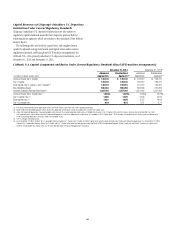 61
61 -
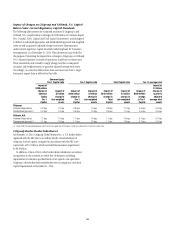 62
62 -
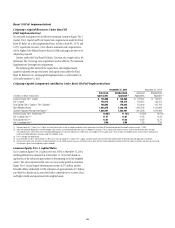 63
63 -
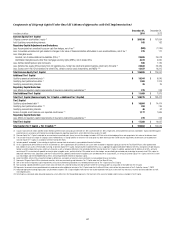 64
64 -
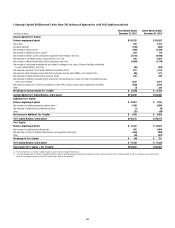 65
65 -
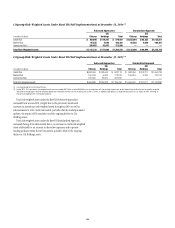 66
66 -
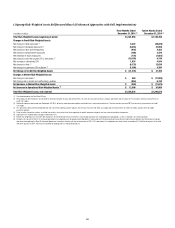 67
67 -
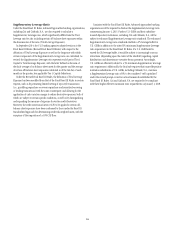 68
68 -
 69
69 -
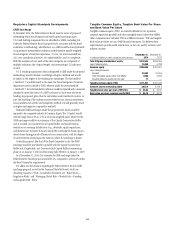 70
70 -
 71
71 -
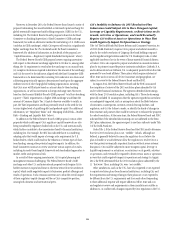 72
72 -
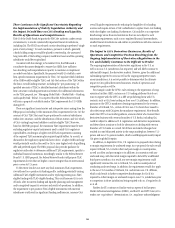 73
73 -
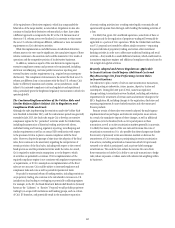 74
74 -
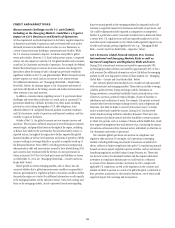 75
75 -
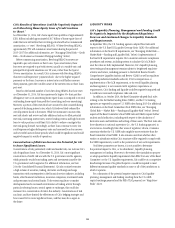 76
76 -
 77
77 -
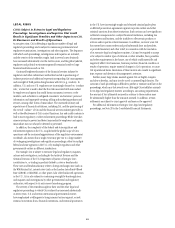 78
78 -
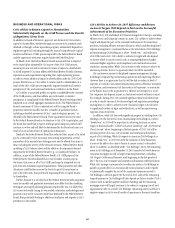 79
79 -
 80
80 -
 81
81 -
 82
82 -
 83
83 -
 84
84 -
 85
85 -
 86
86 -
 87
87 -
 88
88 -
 89
89 -
 90
90 -
 91
91 -
 92
92 -
 93
93 -
 94
94 -
 95
95 -
 96
96 -
 97
97 -
 98
98 -
 99
99 -
 100
100 -
 101
101 -
 102
102 -
 103
103 -
 104
104 -
 105
105 -
 106
106 -
 107
107 -
 108
108 -
 109
109 -
 110
110 -
 111
111 -
 112
112 -
 113
113 -
 114
114 -
 115
115 -
 116
116 -
 117
117 -
 118
118 -
 119
119 -
 120
120 -
 121
121 -
 122
122 -
 123
123 -
 124
124 -
 125
125 -
 126
126 -
 127
127 -
 128
128 -
 129
129 -
 130
130 -
 131
131 -
 132
132 -
 133
133 -
 134
134 -
 135
135 -
 136
136 -
 137
137 -
 138
138 -
 139
139 -
 140
140 -
 141
141 -
 142
142 -
 143
143 -
 144
144 -
 145
145 -
 146
146 -
 147
147 -
 148
148 -
 149
149 -
 150
150 -
 151
151 -
 152
152 -
 153
153 -
 154
154 -
 155
155 -
 156
156 -
 157
157 -
 158
158 -
 159
159 -
 160
160 -
 161
161 -
 162
162 -
 163
163 -
 164
164 -
 165
165 -
 166
166 -
 167
167 -
 168
168 -
 169
169 -
 170
170 -
 171
171 -
 172
172 -
 173
173 -
 174
174 -
 175
175 -
 176
176 -
 177
177 -
 178
178 -
 179
179 -
 180
180 -
 181
181 -
 182
182 -
 183
183 -
 184
184 -
 185
185 -
 186
186 -
 187
187 -
 188
188 -
 189
189 -
 190
190 -
 191
191 -
 192
192 -
 193
193 -
 194
194 -
 195
195 -
 196
196 -
 197
197 -
 198
198 -
 199
199 -
 200
200 -
 201
201 -
 202
202 -
 203
203 -
 204
204 -
 205
205 -
 206
206 -
 207
207 -
 208
208 -
 209
209 -
 210
210 -
 211
211 -
 212
212 -
 213
213 -
 214
214 -
 215
215 -
 216
216 -
 217
217 -
 218
218 -
 219
219 -
 220
220 -
 221
221 -
 222
222 -
 223
223 -
 224
224 -
 225
225 -
 226
226 -
 227
227 -
 228
228 -
 229
229 -
 230
230 -
 231
231 -
 232
232 -
 233
233 -
 234
234 -
 235
235 -
 236
236 -
 237
237 -
 238
238 -
 239
239 -
 240
240 -
 241
241 -
 242
242 -
 243
243 -
 244
244 -
 245
245 -
 246
246 -
 247
247 -
 248
248 -
 249
249 -
 250
250 -
 251
251 -
 252
252 -
 253
253 -
 254
254 -
 255
255 -
 256
256 -
 257
257 -
 258
258 -
 259
259 -
 260
260 -
 261
261 -
 262
262 -
 263
263 -
 264
264 -
 265
265 -
 266
266 -
 267
267 -
 268
268 -
 269
269 -
 270
270 -
 271
271 -
 272
272 -
 273
273 -
 274
274 -
 275
275 -
 276
276 -
 277
277 -
 278
278 -
 279
279 -
 280
280 -
 281
281 -
 282
282 -
 283
283 -
 284
284 -
 285
285 -
 286
286 -
 287
287 -
 288
288 -
 289
289 -
 290
290 -
 291
291 -
 292
292 -
 293
293 -
 294
294 -
 295
295 -
 296
296 -
 297
297 -
 298
298 -
 299
299 -
 300
300 -
 301
301 -
 302
302 -
 303
303 -
 304
304 -
 305
305 -
 306
306 -
 307
307 -
 308
308 -
 309
309 -
 310
310 -
 311
311 -
 312
312 -
 313
313 -
 314
314 -
 315
315 -
 316
316 -
 317
317 -
 318
318 -
 319
319 -
 320
320 -
 321
321 -
 322
322 -
 323
323 -
 324
324 -
 325
325 -
 326
326 -
 327
327
 |
 |

53
Regulatory Capital Standards Developments
GSIB Surcharge
In December 2014, the Federal Reserve Board issued a notice of proposed
rulemaking which would impose risk-based capital surcharges upon
U.S. bank holding companies that are identified as GSIBs, including Citi.
Under the Federal Reserve Board’s proposed rule, consistent with the Basel
Committee’s methodology, identification as a GSIB would be based primarily
on quantitative measurement indicators underlying five equally weighted
broad categories of systemic importance: (i) size, (ii) interconnectedness,
(iii) cross-jurisdictional activity, (iv) substitutability, and (v) complexity.
With the exception of size, each of the other categories are comprised of
multiple indicators also of equal weight, and amounting to 12 indicators
in total.
A U.S. banking organization that is designated a GSIB under the proposed
methodology would calculate a surcharge using two methods and would
be subject to the higher of the resulting two surcharges. The first method
(“method 1”) would be based on the same five broad categories of systemic
importance used to identify a GSIB, whereas under the second method
(“method 2”) the substitutability indicator would be replaced with a measure
intended to assess the extent of a GSIB’s reliance on short-term wholesale
funding. As proposed, given that the calculation under method 2 involves, in
part, the doubling of the indicator scores related to size, interconnectedness,
cross-jurisdictional activity and complexity, method 2 would generally result
in higher surcharges as compared to method 1.
Estimated GSIB surcharges under the proposed rule, which would be
required to be comprised entirely of Common Equity Tier 1 Capital, would
initially range from 1.0% to 4.5% of total risk-weighted assets. Moreover, the
GSIB surcharge would be an extension of the Capital Conservation Buffer
and, if invoked, any Countercyclical Capital Buffer, and would result in
restrictions on earnings distributions (e.g., dividends, equity repurchases,
and discretionary executive bonuses) should the surcharge be drawn upon to
absorb losses during periods of financial or economic stress, with the degree
of such restrictions based upon the extent to which the surcharge is drawn.
Under the proposal, like that of the Basel Committee’s rule, the GSIB
surcharge would be introduced in parallel with the Capital Conservation
Buffer and, if applicable, any Countercyclical Capital Buffer, commencing
phase-in on January 1, 2016 and becoming fully effective on January 1, 2019.
As of December 31, 2014, Citi estimates its GSIB surcharge under the
Federal Reserve Board’s proposal would be 4%, compared to at least 2% under
the Basel Committee requirements.
For additional information regarding the Federal Reserve Board’s GSIB
surcharge proposal, as well as the Financial Stability Board’s total loss-
absorbing capacity, or TLAC, consultative document, see “Risk Factors—
Regulatory Risks” and “Managing Global Risk—Market Risk—Funding
and Liquidity Risk” below.
Tangible Common Equity, Tangible Book Value Per Share
and Book Value Per Share
Tangible common equity (TCE), as currently defined by Citi, represents
common equity less goodwill and other intangible assets (other than MSRs).
Other companies may calculate TCE in a different manner. TCE and tangible
book value per share are non-GAAP financial measures. Citi believes these
capital metrics provide useful information, as they are used by investors and
industry analysts.
In millions of dollars or shares, except per share amounts
December 31,
2014
December 31,
2013
Total Citigroup stockholders’ equity $210,534 $204,339
Less: Preferred stock 10,468 6,738
Common equity $200,066 $197,601
Less: Intangible assets:
Goodwill 23,592 25,009
Other intangible assets (other than MSRs) 4,566 5,056
Goodwill related to assets held-for-sale 71 —
Tangible common equity (TCE) $171,837 $167,536
Common shares outstanding (CSO) 3,023.9 3,029.2
Tangible book value per share (TCE/CSO) $ 56.83 $ 55.31
Book value per share (common equity/CSO) $ 66.16 $ 65.23
